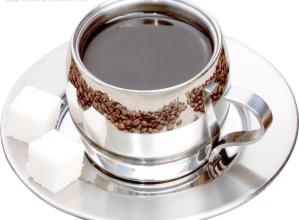Price characteristics and Flavor description of Arabica Coffee introduction of varieties produced by taste treatment
Price characteristics and Flavor description of Arabica Coffee introduction of varieties produced by taste treatment
Arabica species (scientific name coffee Arabica). Originated in Ethiopia (such as Ethiopia) Abyssinia Plateau (present-day Ethiopian plateau) Arabica species, at first mainly used as medicinal food, after the Arab world was introduced into Europe, cultivate the habit of drinking and baking in the 13th century, 1600 years, the world around people become more and more popular favorite drinks.
Coffee beans in the world, Arabica coffee accounts for about 65%, her excellent taste and aroma-80%, directly makes her the only native species, drinking coffee alone. But the degree of resistance to dry, frost, diseases and insect pests are low, especially the biggest natural enemy of coffee-leaf rust, resulting in the country is committed to improving varieties. For example, the famous Sri Lanka, Sri Lanka is the last famous coffee producer since the late 1800s, but one of the coffee farms has not been spared from the epidemic of leaf rust. Since then, Sri Lanka's development has become black, while black tea is in the same country as India.
"Caturra" is a single gene variant of bourbon discovered in Brazil in the 1950s. It has better yield and disease resistance than bourbon, and the tree is shorter and easy to harvest. Unfortunately, it has the same problem as bourbon-- as a result, it has a year off, and the flavor is equal to or slightly worse than bourbon beans.
But it is more adaptable, can be planted with high density, does not need shade trees, and can be vibrant in direct exposure to the sun, so it is also called "exposed coffee" (Sun Coffee).
Kaddura is suitable for high altitude areas from 700m to 1700 m, but the higher the altitude is, the better the flavor is, and the bean yield is relatively reduced. There are also variants of yellow Kaddura in Central and South America, but the wind rating is not as good as Huang bourbon.
"Typica" iron pickup, the name sounds majestic, but in fact it is not so strong. It has weak physique, poor disease resistance, easy to catch rust leaf disease and less fruit yield. It is one of the oldest native varieties in Ethiopia, and many Arabica are derived from iron pickups!
The parietal leaf of the iron pickup is bronzed, and the bean grain is large, pointed, oval or thin. Everyone is familiar with the well-known Mantenin, Blue Mountain, Elephant Bean, Kona, Yunnan Dou …... Wait. They are all derived from iron pickups. (how bad it is)
Bourbon is almost all round beans, beans are a little smaller than tin card, ripening later, but the yield is 30% more than tin card. It is suitable for growing above 1200 meters above sea level, and its flavor is obviously more prominent than those below 1000 meters, but bourbon has a disadvantage that it will rest for a year as a result. Round bourbon is full of vitality, and its resistance to rust leaf disease is better than that of iron pickup, but its flavor is as good as it, or even better.
In 1810, some of the round beans in Bourbon Island mutated into pointed beans, which is known as the "pointed bourbon". It is characterized by a caffeine content of only half, low output, weak physique, and extremely rare, just like a weak aristocratic teenager.

Important Notice :
前街咖啡 FrontStreet Coffee has moved to new addredd:
FrontStreet Coffee Address: 315,Donghua East Road,GuangZhou
Tel:020 38364473
- Prev

Where does Kenyan Coffee AA come from? introduction to the taste treatment method of flavor description in the region of Kenyan coffee
Kenya coffee AA from where the manor region flavor description taste treatment method do not underestimate Kenya's small farmers, they are the same ant soldiers, the overall production capacity is higher than large farms, about 6: 4, which is very rare in bean-producing countries. Kenyan coffee is widely appreciated by connoisseurs, thanks in large part to small farmers guarding the foothills and producing high-quality coffee. In addition, Kenya beans must be strict.
- Next

Flavor description of 90 + coffee beans in Ethiopia introduction of grinding scale by taste treatment method
The four major planting systems are distributed in the following nine major producing areas of Ethiopia: Jinma, Sidamo, Yegashifi, Hara, Lim, Yilu Baba, Gimbi (Lekanti), Tibby, and Becca. On the whole, the flavor of each producing area has its own characteristics. Basically, Western Tiebi and Bebeca
Related
- Detailed explanation of Jadeite planting Land in Panamanian Jadeite Manor introduction to the grading system of Jadeite competitive bidding, Red bid, Green bid and Rose Summer
- Story of Coffee planting in Brenka region of Costa Rica Stonehenge Manor anaerobic heavy honey treatment of flavor mouth
- What's on the barrel of Blue Mountain Coffee beans?
- Can American coffee also pull flowers? How to use hot American style to pull out a good-looking pattern?
- Can you make a cold extract with coffee beans? What is the right proportion for cold-extracted coffee formula?
- Indonesian PWN Gold Mandrine Coffee Origin Features Flavor How to Chong? Mandolin coffee is American.
- A brief introduction to the flavor characteristics of Brazilian yellow bourbon coffee beans
- What is the effect of different water quality on the flavor of cold-extracted coffee? What kind of water is best for brewing coffee?
- Why do you think of Rose Summer whenever you mention Panamanian coffee?
- Introduction to the characteristics of authentic blue mountain coffee bean producing areas? What is the CIB Coffee Authority in Jamaica?

